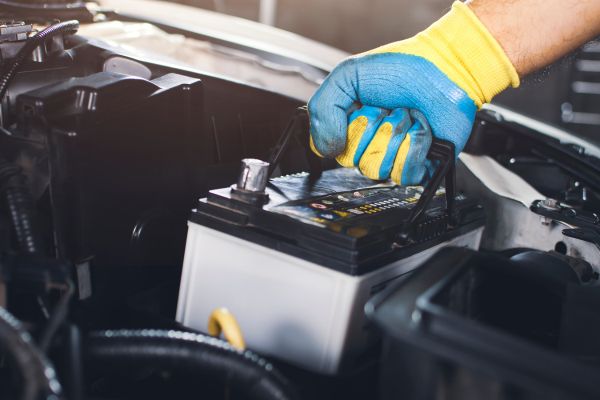When it comes to vehicle reliability, few components are as crucial as the car battery. Despite its compact size, the battery is the lifeblood of your car’s electrical system, supplying the energy needed to start the engine and power essential functions like lights, dashboard instruments, and infotainment systems. That’s why understanding proper car battery maintenance tips is essential for every car owner who values performance, longevity, and peace of mind.
Understanding the Importance of Battery Care
The typical car battery is designed to last between three to five years, but this range depends heavily on usage patterns, environmental conditions, and how well the battery is maintained. Regular battery care doesn’t just extend its life—it also prevents inconvenient breakdowns and costly replacements. Whether you’re navigating a harsh winter or enduring hot summer commutes, your battery must be in peak condition to meet your car’s demands.
Proper car battery maintenance tips ensure that you don’t get stranded due to a dead battery, especially during moments when you need your car the most. Investing a little time into battery care today can save you from unexpected problems tomorrow.
Keeping the Terminals Clean and Corrosion-Free
One of the most overlooked aspects of battery maintenance is the cleanliness of the terminals. Over time, corrosion can build up on the terminals, forming a crusty, white substance that hampers the battery’s ability to transfer power effectively. This can lead to slower starts or, in extreme cases, prevent your vehicle from starting at all.
Regularly inspecting the terminals and cleaning them with an appropriate solution can significantly improve connectivity and efficiency. Even a slight layer of corrosion can interrupt the electrical circuit and reduce the battery’s lifespan. Therefore, a vital part of effective car battery maintenance tips involves keeping those terminals free of buildup.
Checking Battery Voltage Regularly
Understanding your battery’s voltage health is another essential practice. A healthy battery typically reads around 12.6 volts when the car is off and slightly higher when the engine is running. Using a digital multimeter allows you to monitor the battery’s performance and identify when it’s beginning to weaken, long before it reaches a critical point.
Monitoring voltage gives you a clear indication of the battery’s internal health and helps detect early signs of charging system failure. For those who may not be comfortable with these checks, periodic visits to a trusted mechanic can include this step as part of a routine inspection.
Driving Habits That Affect Battery Health
While mechanical checks are important, your driving habits also play a critical role in battery maintenance. Frequent short trips don’t allow the alternator enough time to recharge the battery fully. On the other hand, extended periods of inactivity can lead to a fully discharged battery, especially in colder climates.
It’s beneficial to drive your car regularly and ensure that longer drives are included in your routine. Doing so enables the battery to recharge fully and reduces the chances of deep discharges, which are known to decrease battery capacity over time. Many car battery maintenance tips often highlight driving habits because they can either help or harm your battery depending on your awareness and consistency.
Protecting the Battery from Extreme Temperatures
Environmental conditions can have a severe impact on battery life. Cold weather slows down chemical reactions inside the battery, reducing its capacity and making it harder for your car to start. In contrast, extreme heat can accelerate fluid evaporation and damage internal components.
Parking your car in a garage or shaded area, especially during extreme weather, is one of the simplest ways to extend your battery’s life. Additionally, insulating your battery with a thermal wrap or heat shield can offer extra protection and help stabilize its temperature throughout the year. This preventive approach is one of the most valuable car battery maintenance tips for those living in regions with intense seasonal changes.
Ensuring the Battery is Properly Secured
Another often-neglected detail is the battery’s physical placement and stability. If the battery isn’t tightly secured, vibrations while driving can damage internal components, leading to reduced efficiency and potential failure. Modern vehicles are built with battery trays and brackets designed to hold the battery in place, and ensuring these are intact and functional is essential for long-term reliability.
In addition to stability, verifying that the battery size and type match your vehicle’s specifications is crucial. Using a mismatched battery can strain your car’s electrical system and shorten the battery’s life, negating even the most diligent maintenance efforts.
Keeping the Battery Charged During Inactivity
For car owners who don’t use their vehicles frequently, maintaining a proper charge can be challenging. Batteries naturally discharge over time, and when left idle, they can drain to dangerously low levels. If this happens repeatedly, the battery’s ability to hold a charge diminishes significantly.
A smart solution is to use a trickle charger or a battery maintainer when your vehicle is not in use for extended periods. These devices provide a low, steady charge that keeps the battery in optimal condition without overcharging. Among car battery maintenance tips, this strategy is especially recommended for seasonal vehicles or backup cars.
Recognizing the Signs of a Failing Battery
No matter how diligent you are with maintenance, every battery has a finite lifespan. However, recognizing early warning signs of battery failure can help you take action before a complete breakdown occurs. Symptoms such as slow engine cranking, dim headlights, or dashboard warning lights often indicate a weakening battery.
If you notice these signs, it’s wise to have the battery and charging system inspected by a professional. Catching issues early can prevent you from being caught off guard by a dead battery, especially in situations where immediate transportation is critical.
Getting Professional Testing When Needed
While there’s much you can do on your own, periodic professional battery testing provides a more comprehensive understanding of its health. Many auto shops offer free battery inspections as part of a regular maintenance check. These tests evaluate cold cranking amps (CCA), reserve capacity, and overall performance to give you a clear picture of the battery’s condition.
This insight allows you to make informed decisions about replacements before the battery fails completely. Therefore, combining your routine efforts with expert advice is the most effective way to implement all the key car battery maintenance tips for optimal vehicle performance.
Conclusion: Empower Your Car’s Heartbeat
Taking care of your car’s battery isn’t just a technical task—it’s a proactive investment in your vehicle’s reliability and longevity. Through regular checks, mindful driving habits, and environmental considerations, you can significantly extend the life of your battery. These car battery maintenance tips empower you to avoid the frustration of unexpected failures and enjoy smooth, uninterrupted journeys.
By integrating these strategies into your car care routine, you’re not just maintaining a battery—you’re ensuring that every drive begins with confidence. With a little effort and awareness, your car’s most essential power source will continue to serve you efficiently for years to come.





